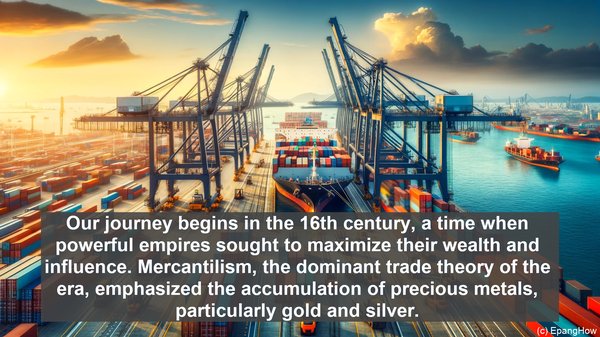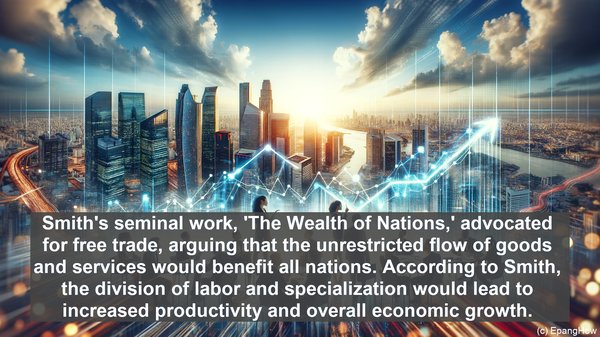Introduction: The Foundations of Trade Theory
Hello everyone, and welcome to today’s discussion on the intriguing dichotomy between mercantilism and economic liberalism in trade theory. As we explore these contrasting perspectives, we’ll uncover the historical backdrop, key principles, and their implications on international trade. So, let’s dive in!
Mercantilism: The Age of Empires and Trade Surpluses
Our journey begins in the 16th century, a time when powerful empires sought to maximize their wealth and influence. Mercantilism, the dominant trade theory of the era, emphasized the accumulation of precious metals, particularly gold and silver. This focus on bullion was driven by the belief that a nation’s economic strength lay in its reserves. Consequently, mercantilist policies aimed to achieve trade surpluses, exporting more than importing, to amass these precious metals. To safeguard their domestic industries, nations imposed tariffs and quotas, discouraging imports and promoting local production. This protectionist approach was seen as crucial for national self-sufficiency and economic growth.
The Mercantilist World: Colonies and Navigation Acts
Mercantilism’s influence extended beyond trade policies. It played a pivotal role in the era’s colonial expansion. Empires established colonies as sources of raw materials, ensuring a steady supply for their industries. These colonies, in turn, became captive markets for the empire’s finished goods. The Navigation Acts, enacted by England in the 17th century, exemplify this mercantilist approach. These laws mandated that colonial trade could only be conducted with English ships, bolstering England’s maritime power and fostering a favorable balance of trade. Overall, mercantilism’s focus on protectionism, bullion accumulation, and colonial exploitation shaped the economic landscape of the time.

The Rise of Economic Liberalism: Adam Smith and Free Trade
The late 18th century witnessed the emergence of a new school of thought: economic liberalism. Spearheaded by Scottish economist Adam Smith, this theory challenged the mercantilist orthodoxy. Smith’s seminal work, ‘The Wealth of Nations,’ advocated for free trade, arguing that the unrestricted flow of goods and services would benefit all nations. According to Smith, the division of labor and specialization would lead to increased productivity and overall economic growth. He criticized mercantilist policies, such as tariffs and protectionism, as hindrances to this progress. Smith’s ideas laid the foundation for the concept of comparative advantage, wherein nations focus on producing goods they can efficiently manufacture, while importing those they cannot. This principle, still influential today, forms the bedrock of economic liberalism.
Liberalism in Practice: The Corn Laws and Ricardo’s Theory
Economic liberalism faced opposition in its early years. In England, the Corn Laws, which imposed high tariffs on imported grain, protected domestic agriculture but raised food prices for consumers. The repeal of these laws in 1846, led by politicians like Robert Peel, marked a significant victory for free trade. Another influential figure in economic liberalism was David Ricardo. His theory of comparative advantage expanded on Smith’s ideas, demonstrating how even if a nation was more efficient in producing all goods, trade could still be mutually beneficial. Ricardo’s theory, through its elegant mathematical formulation, provided a compelling argument for the advantages of specialization and trade.

Modern Perspectives: Neomercantilism and Globalization
While economic liberalism gained prominence in the 19th and 20th centuries, recent decades have witnessed a resurgence of mercantilist policies, albeit in a new form. Referred to as neomercantilism, this approach combines elements of protectionism with strategic trade practices. Nations employ tactics like export subsidies, currency manipulation, and intellectual property regulations to gain a competitive edge. This shift is often attributed to the challenges posed by globalization. Critics argue that economic liberalism, in its pure form, may not adequately address issues like job displacement and income inequality. As a result, countries are increasingly adopting a more nuanced stance, balancing the benefits of free trade with the need to protect domestic industries and workers.
